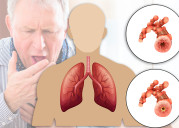When does a Covid-19 patient need oxygen support?

Oxygen, a gas found in the air we breathe, is necessary for human life. Some people with breathing disorders can’t get enough oxygen naturally. They may need supplemental oxygen, or oxygen therapy. People who receive oxygen therapy often see improved energy levels and sleep, and better quality of life. Oxygen therapy is prescribed for people who can’t get enough oxygen on their own. This is often because of lung condition that prevents the lungs from absorbing oxygen, including:
- Corona virus (COVID-19)
- chronic obstructive pulmonary disease (COPD)
- pneumonia
- asthma
- bronchopulmonary dysplasia, underdeveloped lungs in newborns
- heart failure
- cystic fibrosis
- sleep apnea
- lung disease
- trauma to the respiratory system
To determine whether a person will benefit from oxygen therapy, doctors test the amount of oxygen in their arterial blood. Another way to check is using a pulse oximeter that indirectly measures oxygen levels, or saturation, without requiring a blood sample. The pulse oximeter clips onto a person’s body part, like a finger. Low levels mean that a person may be a good candidate for supplemental oxygen. Normal levels of arterial blood oxygen are between 75 and 100 mmHg (millimeters of mercury). An oxygen level of 60 mmHg or lower indicates the need for supplemental oxygen. Too much oxygen can be dangerous as well, and can damage the cells in lungs. The oxygen level should not rise above 110 mmHg. Some people need oxygen therapy all the time, while others need it only occasionally or in certain situations. Some oxygen therapy is done at a doctor’s office, and other times people have an oxygen supply in their homes, or a portable oxygen system.
Types of oxygen therapy:
There are a number of different types of oxygen therapies that can be used. These include:
oxygen gas
liquid oxygen
oxygen concentrators
hyperbaric oxygen therapy
Oxygen gas
Oxygen gas can be stored in a portable tank. These are called compressed gas systems. A larger stationary concentrator is used within the home, and a smaller oxygen tank can be taken to use outside the home. The smaller tanks might be used along with oxygen-conserving devices so that the oxygen supply lasts longer. The oxygen is delivered in pulses, not continuously.
Liquid oxygen
Liquid oxygen also can be stored in a portable tank. Liquid oxygen is more highly concentrated, so more oxygen can fit in a smaller tank. This is helpful for people who are very active, but it will evaporate if it isn’t used in a timely manner. These tanks are refillable. Both liquid oxygen and oxygen gas are available for home delivery in many locations.
Oxygen concentrators
Oxygen concentrators are less portable than the other options. An oxygen concentrator is a device that takes oxygen from the room, concentrates it for therapeutic use, and removes other naturally occurring gases. The benefits of concentrators are that they are less expensive and don’t require filling like tanks. Portable versions are available. However, most models are too large to be truly portable. Oxygen is distributed from the tank through a tube. It enters the lungs through nasal tubes, a face mask, or a tube inserted directly into the person’s windpipe.
Hyperbaric oxygen therapy
Hyperbaric oxygen therapy is unlike the other methods of oxygen therapy. People will breathe in pure oxygen in a pressurized room or chamber. In the hyperbaric chambers, the air pressure is increased to three or four times the normal air pressure levels. This increases the amount of oxygen delivered to the body’s tissue. This type of oxygen delivery is often used to treat wounds, serious infections, or bubbles of air in your blood vessels. Hyperbaric therapy should be carried out carefully so that blood oxygen levels don’t become too high.
Oxygen therapy can be extremely beneficial for those who frequently experience low oxygen levels, regardless of the reason. If needed, regularly utilizing oxygen therapy can allow people to be more active and mobile by decreasing shortness of breath. It also can significantly improve quality of life, and in many cases extend life expectancy.
OXYGEN THERAPY FOR COVID-19
The ongoing second surge in Covid-19 cases has seen a huge rise in the demand for supplemental oxygen.
When does a Covid-19 patient need oxygen support?
A small proportion of Covid-19 patients need oxygen support, when shortness of breath progresses to a more acute condition. Most patients with Covid-19 have a respiratory tract infection, and in the most severe cases their symptoms can include shortness of breath. In a small proportion of such cases, this can progress to a more severe and systemic disease characterised by Acute Respiratory Distress Syndrome (ARDS).
How does Covid-19 trigger shortness of breath?
Shortness of breath occurs because of the way Covid-19 affects the patient’s respiratory system. The lungs enable the body to absorb oxygen from the air and expel carbon dioxide. When a person inhales, the tiny air sacs in the lungs — alveoli — expand to capture this oxygen, which is then transferred to blood vessels and transported through the rest of the body.
Respiratory epithelial cells line the respiratory tract. Their primary function is to protect the airway tract from pathogens and infections, and also facilitate gas exchange. And the SARS-CoV-2 coronavirus can infect these epithelial cells.
To fight such infection, the body’s immune system releases cells that trigger inflammation. When this inflammatory immune response continues, it impedes the regular transfer of oxygen in the lungs. Simultaneously, fluids too build up. Both these factors combined make it difficult to breathe. Low levels of oxygen triggered by Covid-19 are inflammatory markers, which include elevated white blood cell counts and neutrophil counts.
In what conditions is oxygen used in Covid-19 clinical management?
According to the clinical management protocol, a person is suffering from moderate disease when he or she is diagnosed with pneumonia with no signs of severe disease; with the presence of clinical features of dyspnea (shortness of breath) and/or hypoxia (when the body is deprived of adequate oxygen supply at the tissue level); fever, cough, including SpO2 (oxygen saturation level) less than 94% (range 90-94%) in room air.
In moderate cases, oxygen therapy is the primary form of treatment: the target is to achieve 92-96% SpO2, or 88-92% in patients with chronic obstructive pulmonary disease. The devices for administering oxygen in moderate disease are nasal prongs, masks, or masks with breathing/non-rebreathing reservoir bags, depending on requirement. The protocol also recommends awake proning (having patients lie on their stomachs) as a rescue therapy to increase oxygenation.
Severe cases are defined in three categories: severe pneumonia, acute respiratory distress syndrome, and sepsis. The clinical management protocol recommends oxygen therapy at 5 litres/min. When respiratory distress and/or hypoxemia of the patient cannot be alleviated after receiving standard oxygen therapy, the protocol recommends that high-flow nasal cannula oxygen therapy or non-invasive ventilation can be considered. “Compared to standard oxygen therapy, High Flow Nasal Cannula Oxygenation (HFNO) reduces the need for intubation. Patients with hypercapnia (exacerbation of obstructive lung disease), hemodynamic instability, multi-organ failure, or abnormal mental status should generally not receive HFNO,” the protocol says.
(Sharma is a Assistant Professor, Pharmaceutical Analysis & Quality Assurance Shree Medical and Technical College, Bharatpur, Nepal)














